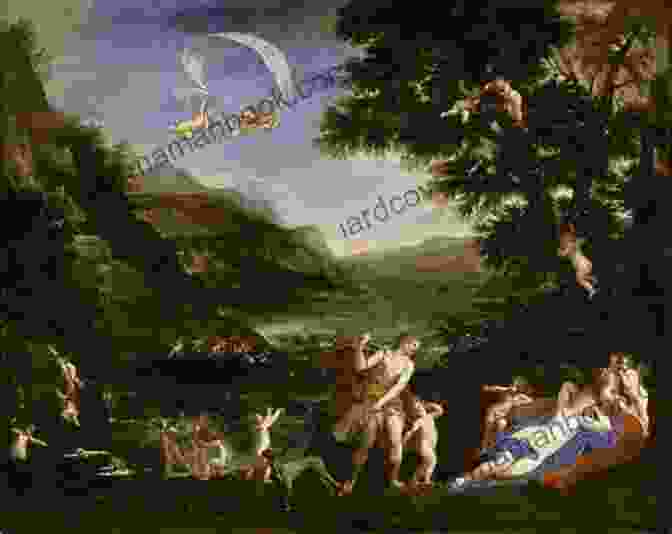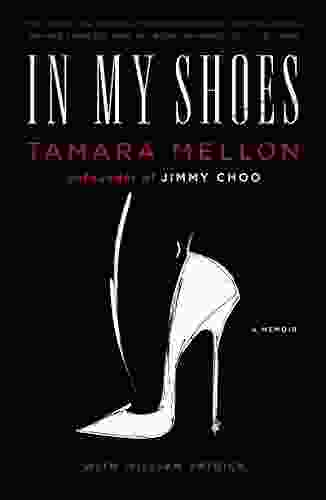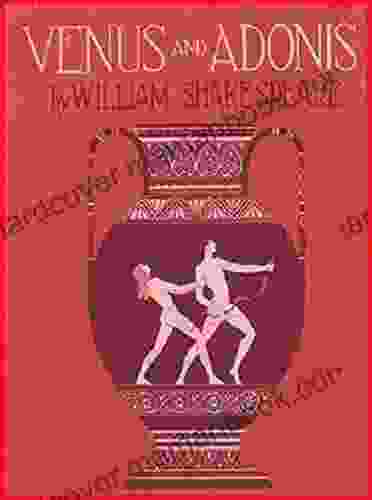Venus and Adonis Annotated Irene Christodoulou

Venus and Adonis is a captivating oil painting created by the Cypriot artist Irene Christodoulou in the 16th century. It depicts the mythological tale of the goddess Venus and her beloved Adonis, a mortal shepherd. This masterpiece is renowned for its exquisite beauty, intricate symbolism, and masterful execution, and has inspired numerous interpretations and discussions throughout art history.
4 out of 5
| Language | : | English |
| File size | : | 461 KB |
| Text-to-Speech | : | Enabled |
| Screen Reader | : | Supported |
| Enhanced typesetting | : | Enabled |
| Print length | : | 46 pages |
| Lending | : | Enabled |
To fully appreciate the depth and richness of Venus and Adonis, it is essential to delve into its iconography, the hidden meanings behind its visual elements. This annotated analysis will provide a detailed examination of the painting, exploring its composition, symbolism, themes, and techniques, offering insights into Christodoulou's artistic vision and the cultural context of the Renaissance period.
Composition

Venus and Adonis is a harmonious composition arranged in a pyramidal structure. The central figures of Venus and Adonis occupy the apex of the triangle, with their bodies forming an intertwined embrace. This arrangement emphasizes their close bond and the intense passion between them.
The background of the painting is divided into two distinct zones. The upper zone features a lush forest with tall trees and a clear sky, representing the idyllic and peaceful realm of nature. The lower zone, in contrast, depicts a rocky and barren landscape, symbolizing the harsh realities and dangers of the mortal world.
The contrast between these two zones highlights the central conflict of the painting: the juxtaposition of love and beauty with mortality and suffering. Venus, the goddess of love and beauty, is shown embracing Adonis, a mortal who is destined to die.
Symbolism
Venus and Adonis is replete with rich symbolism that enhances its narrative and conveys profound meanings.
Venus: The goddess Venus represents love, beauty, and fertility. She is often depicted with attributes such as doves, roses, and mirrors, which symbolize her power to inspire love and desire. In this painting, Venus is shown with a dove perched on her shoulder, emphasizing her role as the goddess of love.
Adonis: Adonis represents the beauty and vulnerability of youth. He is often associated with the cycle of life and death, as he was killed by a boar while hunting. In this painting, Adonis is depicted as a young man with a graceful and athletic body, symbolizing his physical perfection.
Forest: The forest in the background represents the natural world, a place of beauty and abundance. It also symbolizes the realm of love and desire, where Venus and Adonis can indulge in their passion without restraint.
Barren landscape: The barren landscape in the foreground represents the harsh realities of the mortal world, a place of suffering and death. It foreshadows the tragic fate of Adonis, who is destined to die young.
Cupid: The figure of Cupid, the god of love, is shown hovering above Venus and Adonis. He holds a bow and arrow, symbolizing his power to inspire love and desire. Cupid's presence emphasizes the central role of love in the painting.
Themes
Venus and Adonis explores several central themes that resonate with human experience.
Love and beauty: The painting celebrates the beauty and power of love. Venus and Adonis are portrayed as a couple who are deeply in love, their bodies entwined in an embrace that conveys both passion and tenderness.
Mortality and suffering: The painting also confronts the harsh reality of mortality. Adonis, despite his beauty and youth, is destined to die. This juxtaposition of love and beauty with mortality underscores the fragility of human existence.
The conflict between love and duty: Venus, as the goddess of love, is torn between her love for Adonis and her duty to protect him. This conflict is reflected in her expression, which conveys both love and concern.
Techniques
Irene Christodoulou employed various techniques to create the exquisite beauty and emotional depth of Venus and Adonis.
Sfumato: Christodoulou used the sfumato technique to create soft transitions between light and shadow, giving the figures a sense of ethereal beauty. This technique is particularly evident in the modeling of Venus's face and body.
Chiaroscuro: Christodoulou employed chiaroscuro, the use of light and shadow, to create a sense of drama and depth. The contrast between the illuminated figures and the dark background highlights the central figures and emphasizes their emotional state.
Compositional balance: The painting is carefully composed to create a sense of balance and harmony. The pyramidal structure of the figures and the use of contrasting elements in the background contribute to the overall aesthetic appeal of the work.
Venus and Adonis is a masterpiece of Renaissance art that captures the beauty, passion, and fragility of human existence. Irene Christodoulou's skillful use of symbolism, themes, and techniques creates a work that continues to inspire and resonate with viewers centuries after its creation.
This annotated analysis has provided a detailed examination of the painting, revealing its rich iconography, exploring its central themes, and appreciating the masterful techniques employed by Irene Christodoulou. By delving into the hidden meanings of Venus and Adonis, we can fully appreciate its artistic merit and its enduring significance as a testament to the human experience.
4 out of 5
| Language | : | English |
| File size | : | 461 KB |
| Text-to-Speech | : | Enabled |
| Screen Reader | : | Supported |
| Enhanced typesetting | : | Enabled |
| Print length | : | 46 pages |
| Lending | : | Enabled |
Do you want to contribute by writing guest posts on this blog?
Please contact us and send us a resume of previous articles that you have written.
 Top Book
Top Book Novel
Novel Fiction
Fiction Nonfiction
Nonfiction Literature
Literature Paperback
Paperback Hardcover
Hardcover E-book
E-book Audiobook
Audiobook Bestseller
Bestseller Classic
Classic Mystery
Mystery Thriller
Thriller Romance
Romance Fantasy
Fantasy Science Fiction
Science Fiction Biography
Biography Memoir
Memoir Autobiography
Autobiography Poetry
Poetry Drama
Drama Historical Fiction
Historical Fiction Self-help
Self-help Young Adult
Young Adult Childrens Books
Childrens Books Graphic Novel
Graphic Novel Anthology
Anthology Series
Series Encyclopedia
Encyclopedia Reference
Reference Guidebook
Guidebook Textbook
Textbook Workbook
Workbook Journal
Journal Diary
Diary Manuscript
Manuscript Folio
Folio Pulp Fiction
Pulp Fiction Short Stories
Short Stories Fairy Tales
Fairy Tales Fables
Fables Mythology
Mythology Philosophy
Philosophy Religion
Religion Spirituality
Spirituality Essays
Essays Critique
Critique Commentary
Commentary Glossary
Glossary Bibliography
Bibliography Index
Index Table of Contents
Table of Contents Preface
Preface Introduction
Introduction Foreword
Foreword Afterword
Afterword Appendices
Appendices Annotations
Annotations Footnotes
Footnotes Epilogue
Epilogue Prologue
Prologue Nicolas Leonard
Nicolas Leonard Joe Kenda
Joe Kenda Rick Austin
Rick Austin Joel Stern
Joel Stern Cat Bowser
Cat Bowser Sean Rubin
Sean Rubin Jesse Szewczyk
Jesse Szewczyk Terra Weiss
Terra Weiss Lorhainne Eckhart
Lorhainne Eckhart Ella S Kitchen
Ella S Kitchen Todd Wilbur
Todd Wilbur Igor Nikolic
Igor Nikolic Shudong Chen
Shudong Chen Stephen Crane
Stephen Crane James Byrne
James Byrne Julie Rains
Julie Rains Harold Evensky
Harold Evensky Jon Krakauer
Jon Krakauer Benjamin Corman
Benjamin Corman Rob G
Rob G
Light bulbAdvertise smarter! Our strategic ad space ensures maximum exposure. Reserve your spot today!

 Eugene ScottMore Strange Stories For Peculiar People Nightmare Fuel: Uncover the Eerie...
Eugene ScottMore Strange Stories For Peculiar People Nightmare Fuel: Uncover the Eerie... Ross NelsonFollow ·6.9k
Ross NelsonFollow ·6.9k Franklin BellFollow ·14.6k
Franklin BellFollow ·14.6k Francis TurnerFollow ·15.4k
Francis TurnerFollow ·15.4k Robert ReedFollow ·2.6k
Robert ReedFollow ·2.6k Bob CooperFollow ·7k
Bob CooperFollow ·7k Jaden CoxFollow ·9.2k
Jaden CoxFollow ·9.2k Roald DahlFollow ·13k
Roald DahlFollow ·13k Mario SimmonsFollow ·6.3k
Mario SimmonsFollow ·6.3k

 Eugene Powell
Eugene PowellComplete Guide to Using Yoga With Kids: Benefits, Tips,...
Yoga is an ancient practice that has been...

 Benji Powell
Benji PowellHow to Make $000 Per Week on Craigslist
Are you looking for a way to make extra money...

 Gabriel Garcia Marquez
Gabriel Garcia MarquezGrocery Row Gardening: The Exciting New Permaculture...
Kick-start your gardening journey with the...

 Hayden Mitchell
Hayden MitchellUnveiling the Gripping World of Winterwood: Ben Hood...
In the annals of crime thrillers, the...

 E.M. Forster
E.M. ForsterThe Financial Advisor Guide To Managing and Investing...
As a financial...

 Lee Simmons
Lee SimmonsIn My Shoes Memoir: A Poignant Journey of Resilience,...
In the tapestry of life, adversity often...
4 out of 5
| Language | : | English |
| File size | : | 461 KB |
| Text-to-Speech | : | Enabled |
| Screen Reader | : | Supported |
| Enhanced typesetting | : | Enabled |
| Print length | : | 46 pages |
| Lending | : | Enabled |










